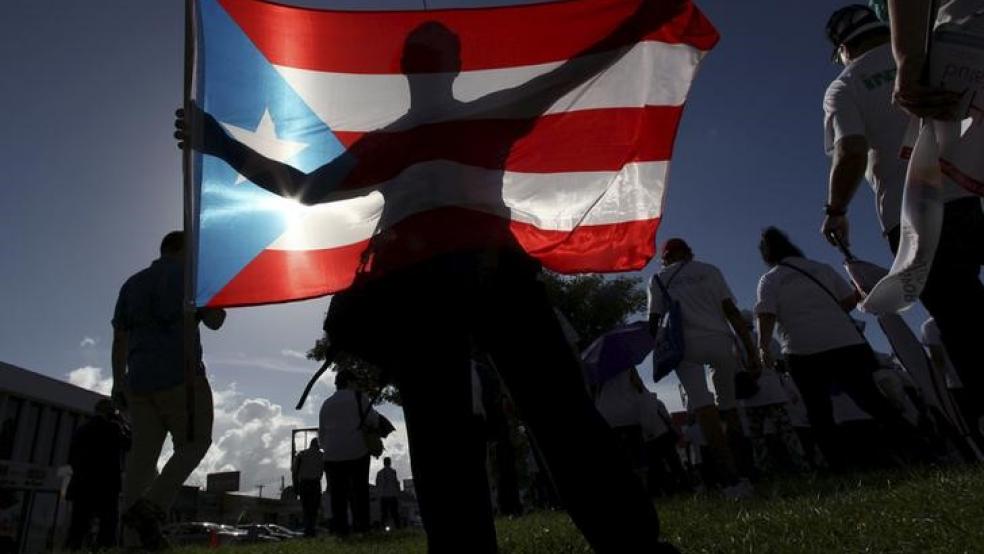On Monday, Puerto Rico defaulted on roughly $422 million debt payments -- bad, but not yet tragic. Now we know the financial outlook could get a lot worse for the territory before it gets better.
“Faced with the inability to meet the demands of our creditors and the needs of our people, I had to make a choice,” Governor Alejandro García Padilla said Sunday night said in a televised address. “I decided that essential services for the 3.5 million American citizens in Puerto Rico came first.”
Related: Why Hedge Funds May Not Get a Windfall from Puerto Rico
In addition to skipping the almost half-billion bond payments, the governor imposed a debt moratorium, so the island won’t put any more money toward its financial obligations, setting up potentially far-reaching defaults later this year.
Why did Puerto Rico miss its payments?
Thanks to a quirk in federal law, Puerto Rico must make debt payments before it can use its money for basic government services, like providing healthcare and education to its residents.
The territory has done that. A lot. The government has laid off tens of thousands of public sector employees, boosted sales tax from 7 percent to 11.5 percent and closed a large swath of schools.
Faced with the decision to make more cuts or skimp on the payments, García Padilla opted to keep the services that are left running.
Related: Puerto Rico’s Fiscal Crisis Has Been Brewing for 75 Years
What happens next?
On July 1, the commonwealth faces a $2 billion debt payment, making Monday’s sum seem like small change. What makes July different from yesterday, besides sheer size, is that $800 million are “general obligation” bonds, meaning their payments are supposed to be guaranteed by the island’s constitution.
Puerto Rico owes a total of $72 billion in bond payments. Failure to repay could spark the single largest municipal debt default, which would prompt the very service cuts the governor staved off, with draconian reductions to things like electricity and pensions.
Government Development Bank, the territory’s central bond issuer, would also suffer a serious blow, one that could reverberate throughout the $3.7 trillion U.S. bond market.
Related: How Hedge Funds Are Profiting from Puerto Rico’s Pain
Where is Congress on this?
On recess. House Speaker Paul Ryan (R) has invested considerable political capital into coming up with a solution to the debt crisis. At the end of last year, he set a March 31 deadline for Congress to act, but that soon fell by the wayside.
Recently, the Wisconsin lawmaker has worked closely with the Natural Resources Committee, the panel of jurisdiction, on legislation that gives the island some access to court-supervised debt restructuring in exchange for a Washington-based fiscal oversight board.
However, the proposed bill and Ryan have run into stiff opposition from House conservatives, most notably the far-right House Freedom Caucus. Outside, dark money groups also argue the legislation is essentially a bailout for the island, even though no federal money is involved.
Congress gets back into town next week, and it’s possible lawmakers will be no closer to a solution to the crisis that has lead around 84,000 residents to depart in 2014 alone, according to a new report from the island’s Institute of Statistics.
“If Congress fails to authorize a mechanism to restructure our debt, the 3.5 million American citizens who live in Puerto Rico will continue to suffer,” García Padilla warned.





